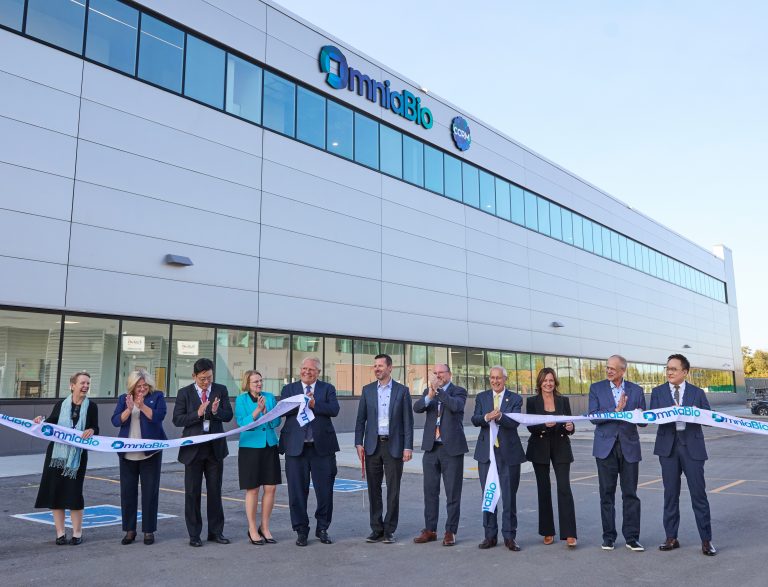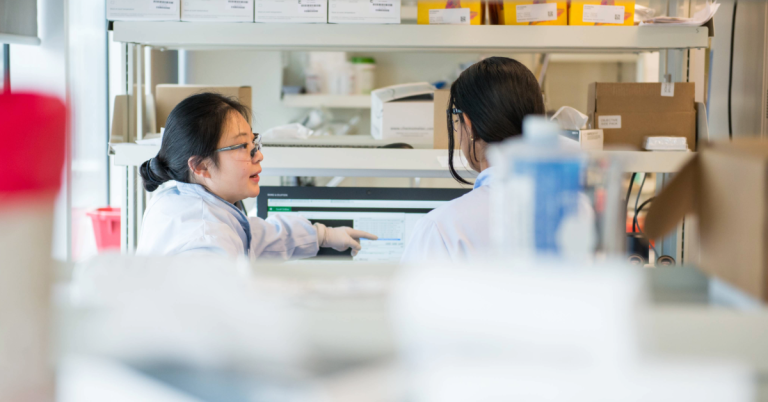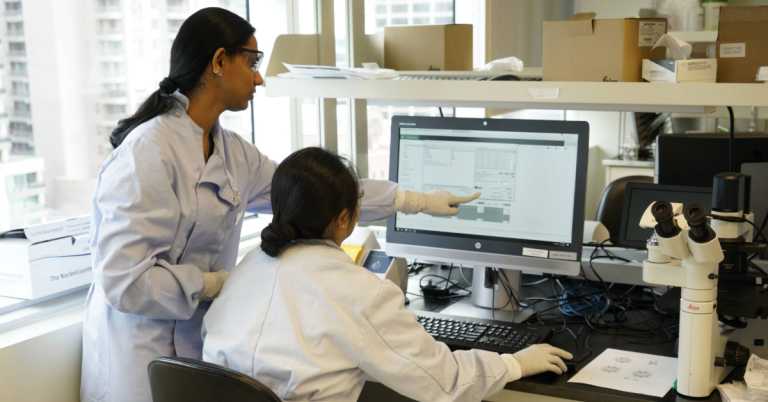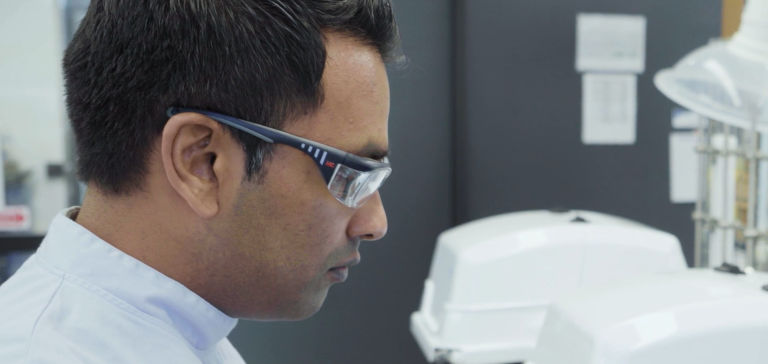iPSCs are created by reprogramming differentiated somatic cells, which allows them to exhibit properties similar to embryonic stem cells. From a scale-up and manufacturing perspective, groups need the right support to achieve their goals in a time-efficient and cost-effective manner.
May 27, 2024
| OmniaBio
Understanding Reprogramming of Induced Pluripotent Stem Cells, and Considerations for Use in GMP Manufacturing
It was less than 20 years ago that the foundational study by Takahashi and Yamanaka(2006) re-wrote the biology textbooks. Based on some elegant experiments, the team determined that fully differentiated adult skin cells could be reprogrammed back into stem cells by the over-expression of just four simple genes (Oct3/4, Sox2, Klf4, c-Myc).Thus, induced pluripotent stem cells (iPSCs) were born.
iPSCs are created by reprogramming differentiated somatic cells, which allows them to exhibit properties similar to embryonic stem cells, including:
- Proliferation
- Self-renewal
- Expression of pluripotency markers
- Able to differentiate into cells from all three germ layers
- Able to contribute to mouse embryonic development when injected into blastocysts
Why reprogram cells to iPSCs?
Reprogramming somatic cells to iPSCs has revolutionized the fields of biology and regenerative medicine. Some of the major areas for iPSC use include:
- Drug discovery/development: The physiological relevance of iPSCs makes them an ideal tool to test the effects of experimental drugs and to conduct target validation.
- Developmental biology: Cultured iPSCs from an individual can act as mechanistic tools to study normal cellular and disease progression. Rather than just modelling a disease in a standard cell, iPSCs can represent nuances in biology that come from different patients.
- Cell/tissue replacement: iPSCs represent a renewal resource of cells that can come from patients themselves. With the ability to be differentiated into any cell of interest, iPSCs have been instrumental in opening new avenues of research into replacement/therapy for cells damaged by trauma or compromised by disease. Numerous autologous (patient-specific) cell replacement therapies with iPSCs have been reported in many different clinical trials for indications like spinal cord injury, blindness, cardiovascular and neurodegenerative disease. Allogeneic iPSCs – where one type of iPSC may be used for many patients – are now being developed for future therapies.
Essentials of iPSC reprogramming
Reprogramming different somatic cell types has now become more of a standardized practice. It is common to reprogram peripheral blood cells, due to their ease of collection, but reprogramming human fibroblasts (skin-derived cells) is also widely practiced. Reprogramming is achieved by delivery and subsequent cellular expression of reprogramming factors. These factors can be delivered by viruses, DNA or mRNA. The reprogramming process takes approximately three weeks and is followed by clonal selection, cell expansion, banking and characterization. The full process can take months, as careful characterization of iPSCs is critical in creating high-quality cells.
Characterization of clonal iPSC lines requires important quality control testing, such as:
- Assessment of pluripotency status (e.g. by flow cytometry and qRT-PCR)
- Assessment of differentiation potential (e.g. by directed differentiation followed by marker analysis)
- Karyotype analysis
- Cell line identity testing
- Cell viability assessment
- Transgene/vector clearance testing
- Sterility
Creating GMP-ready iPSCs
Reprogramming iPSCs remains an open and manual process, carried out using conventional basic research techniques. To advance cell and gene therapies and move products derived from iPSCs into the clinic, the ability to generate and maintain cells for therapeutics in a Good Manufacturing Practices (GMP) setting is paramount.
How is this achieved?
A critical aspect of manufacturing GMP-grade iPS cell lines is the identification of GMP-grade reagents that will not compromise reprogramming efficiency. All raw materials and reagents required for reprogramming (e.g. cell culture media, reprogramming factors, passaging reagents, or cell adherence reagents) need to be tested to confirm their suitability and quality. The use of these reagents must be optimized for successful cell conversion and growth. Early integration of GMP-grade reagents in the development of iPSC lines will mitigate potential regulatory or chemistry, manufacturing and controls (CMC)-quality and robustness bottlenecks in later stages of development.
Other important considerations for GMP reprogramming, which are often overlooked in early research environments, include, 1) ensuring donor samples have been sourced with the appropriate consent; 2) ensuring donor samples have been appropriately tested so they can be considered GMP-compliant and appropriate commercial supply-chain sources; and 3) determining which commercial or therapeutic licenses are needed based on the techniques chosen for reprogramming.
While there is significant excitement about the potential of iPSC reprogramming to develop life-saving medicines, this technique requires specialized expertise in both research and operating GMP environments. Reprogramming of cells into iPSCs and subsequent differentiation into various types of functional cells can be challenging. From a scale-up and manufacturing perspective, groups need the right support to achieve their goals in a time-efficient and cost-effective manner.
Does your company require support with iPSC reprogramming? OmniaBio has industry-leading expertise supporting numerous therapeutic developers across the entire product lifecycle through scale-up to the GMP setting. Ask us how we can help your company here.
Related Content
Loading...




